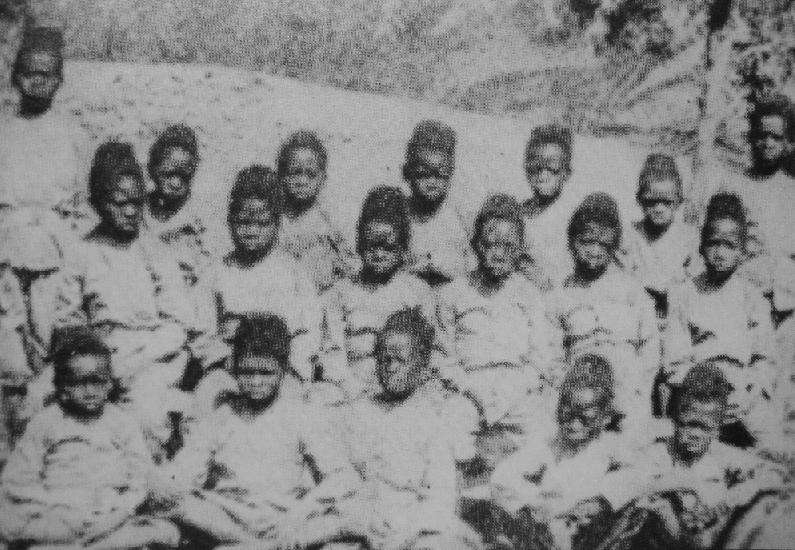
Royal Navy Freeing African Boys from Arab Slave Traders (1896)

Figure 1.--The British Royal Navy was the primary force used to end the slave trade in the Indian Ocean. Even with the Royal Navy and the European colonization of East Africa, slavery continued after slavery had been abloshed outside tghe Arab world. There slavery continued into the 20th century. A Royal Navy patrol in 1896 captured two Arab “slave dhows” containing these 18 small African boys from East Africa. They were destined to be sold as slaves, but the British were unable to determine what port they were headed for or for what purpose the boys were to be used by Arab buyers.
|
|
The British Royal Navy was the primary force used to end the slave trade in the Indian Ocean. Even with the Royal Navy and the European colonization of East Africa, slavery continued after slavery had been abloshed outside tghe Arab world. There slavery continued into the 20th century. A Royal Navy patrol in 1896 captured two Arab “slave dhows” containing these 18 small African boys from East Africa. They were destined to be sold as slaves, but the British were unable to determine what port they were headed for or for what purpose the boys were to be used by Arab buyers. The Royal Navy released the boys to the custody of the British Consul in Muscat.
Missionary Account
American missionaries established a medical clinic in Muscat (1893). A missionary there provided this account, "In 1896 the British Navy captured two “slave dhows” containing 18 small African boys destined to be sold as slaves in some unknown port. The boys became virtual wards of the British Consulate. It is not difficult to understand that it did not take long for the British consular officer to tire of 18 boys running up and down the verandas of the consulate. Hence, when Peter Zwemer offered to take the boys, his offer was gladly accepted and the “Rescued Slave-boys School” was begun. This school, with several wartime interruptions, was destined to serve Oman’s people for 90 years. Peter Zwemer was kept busy with the 18 boys in the new school in Muscat. All the boys spoke Swahili so their lessons included Arabic and English. Some of these boys eventually worked in the Mission’s medical facility. 2 shipped out as sailors on the British gunboat “Sphinx”. Some years later, one was discovered by Dr. Thoms in New York with a job as a cook. Others were employed in home and offices in Muscat. Proficiency in English gave them a considerable advantage.”
Arab Trade in Boys
The astute reader will notice something peculiar in this incident. All the captive Africans were pre-pubesent boys. This is unlike anything the Royal Navy ever encounteed in the Atlantic slave trade. There slavers shiped mixed cargoes of adults (both mren and women) as well as children. They were all in demand. Here the Arab slave traders had obviously received an order for pre-pubesent boys. We note Royal Navy seizues in the Indian Ocean with mixed cargoes of captive Africans. We do not know how common these cargoes of boys were. Just what the boys were wanted by Arab buyers was not determined by the Royal Navy officers who seized the ship. It seems quite likely bit was for sexual purposes or for castration and sale as enuchs. We do not know if there were similar shipments of girls.
HBC

Navigate the Boys' Historical Clothing Web Site:
[Return to the Main Indian Ocean-East African country slave trade page]
[Return to the Main ending the Indian Ocean slave trade page]
[Return to the Main Indian Ocean slave trade page]
[Return to the Main Arab African slave trade page]
[Return to the Main European slave trade page]
[Introduction]
[Activities]
[Biographies]
[Chronology]
[Clothing styles]
[Countries]
[Bibliographies]
[Contributions]
[FAQs]
[Glossaries]
[Images]
[Registration]
[Tools]
[Boys' Clothing Home]
Created: 4:21 AM 9/4/2010
Last updated: 4:21 AM 9/4/2010



